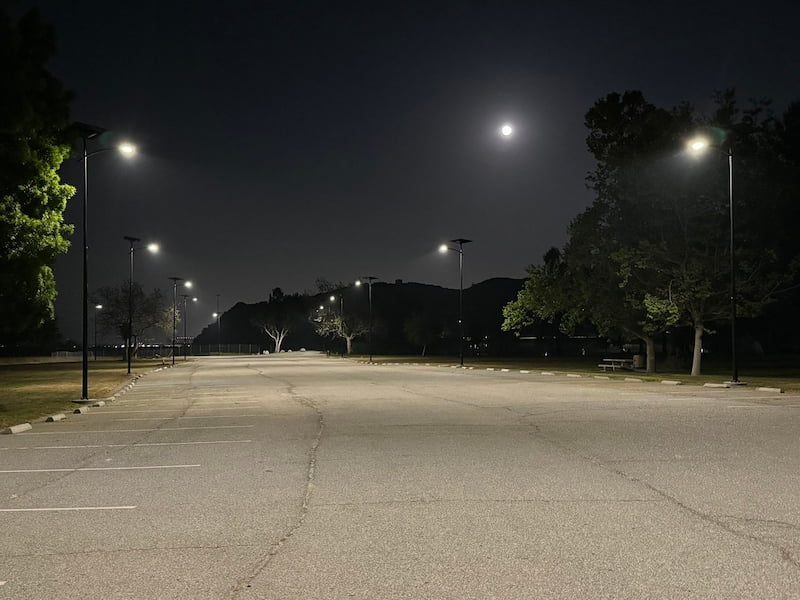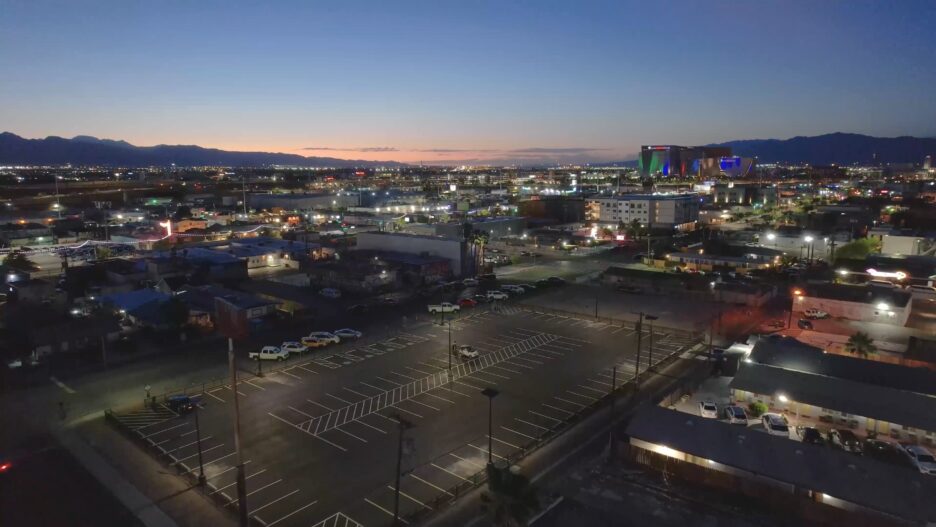Why Lighting Design Matters in Commercial Spaces
Lighting plays a foundational role in how a site functions after dark. In parking areas, it shapes how people move, how secure the space feels, and how easy it is to navigate.
When lighting is inconsistent or outdated, it can lead to shadowed zones, unclear pathways, and poor overall visibility. These conditions increase the chance of confusion, hesitation, or unwanted incidents—none of which support the goals of a well-planned property.
By contrast, a well-lit lot improves flow, enhances visibility, and reinforces confidence from the moment someone enters the space. It helps define boundaries, highlight circulation paths, and support a more predictable experience for all users.
Lighting design isn’t just about illumination—it’s about clarity and reliability. And in commercial settings where efficiency and safety go hand in hand, it’s one of the most practical ways to improve performance without adding complexity.
Table of Contents
Understanding Your Lighting Options: LED vs. Solar
Most commercial lighting systems today use LED fixtures for their efficiency, long lifespan, and low maintenance needs. These systems are typically tied to the electrical grid and installed with buried wiring and conduit. They’re familiar, reliable, and widely available.
But in many cases, solar-powered lighting offers a smarter alternative—especially for new construction, large lots, or locations where trenching is difficult or costly.
Off-grid systems like Fonroche SmartLights combine high-output LED fixtures with integrated solar panels, battery storage, and smart controls. They operate independently of the utility grid, which eliminates the need for wiring, trenching, and monthly energy bills.
Key differences to consider:
- Installation: Grid-tied systems require trenching and electrical coordination; solar installs faster with less disruption
- Infrastructure: Solar lighting removes dependence on underground wiring or utility feeds
- Performance: Both LED and solar-LED systems can meet commercial illumination standards, but solar offers added resilience during outages
The right solution depends on site conditions, long-term goals, and how much infrastructure flexibility is needed during and after installation.

Choosing the Right Fixture and Wattage
Not all light fixtures perform the same—even if they use the same technology. For commercial parking areas, it’s important to select fixtures that provide uniform illumination without creating glare, shadows, or excessive brightness.
The key is to match light output to the layout. Higher-wattage fixtures may be needed for wide-open areas, while smaller zones or pedestrian-focused lots benefit from controlled, lower-output fixtures. What matters more than raw wattage is how effectively the light is distributed.
When selecting fixtures, consider:
- Lumen output: Determines how much usable light is delivered
- Light distribution: Type III or Type V optics help shape light coverage across drive lanes and parking rows
- Color temperature: Cooler tones (4000K) offer clear visibility; warmer tones (3000K) reduce glare and light spill
With systems like Fonroche SmartLights, fixture selection isn’t left to guesswork. It’s based on photometric studies and site-specific modeling—so each light delivers what’s needed, where it’s needed, without over- or under-lighting the space.
Selecting Pole Height and Layout for Coverage
The height and placement of light poles directly impact how well a parking lot is illuminated. Pole height determines how far light can reach, while layout affects the uniformity and number of fixtures needed.
For most commercial sites:
- 15–20 ft poles are used in smaller or pedestrian-priority areas
- 25–30 ft poles are more common in wide, open lots with fewer obstructions
Taller poles can reduce the total number of lights required, but they must be matched with stronger materials and deeper foundations to handle wind loads. Spacing is equally important—placing poles too far apart can create dark zones, while clustering them too closely may cause overlap and waste.
Good lighting design balances:
- Visibility
- Pole count
- Fixture distribution
- Environmental conditions (wind zones, snow load, etc.)
With Fonroche SmartLights, pole height and layout are tailored through a full design study. This ensures each system delivers consistent coverage with fewer units—installed without trenching or dependence on existing utility lines.

Why Developers Are Switching to Solar Lighting
The shift toward solar-powered lighting isn’t just about sustainability—it’s about flexibility, efficiency, and long-term value. For many commercial projects, avoiding trenching and utility coordination can simplify installation and keep timelines on track. And once the lights are in, they operate independently, with no monthly energy costs or external power dependencies.
Solar lighting also offers:
- Faster deployment, especially in large lots or hard-to-wire locations
- Lower maintenance, thanks to sealed, low-touch systems
- Greater resilience, staying operational during grid outages or storms
- Built-in sustainability, helping support environmental and energy goals
Systems like Fonroche SmartLights are designed for high-use environments. With integrated solar panels, long-life batteries, and smart energy management, they deliver dependable lighting—night after night—with no disruption to operations.

